News & Analysis
The Legal and Institutional Framework for Nuclear Energy in Kenya: Are we Getting it Right?
Published
2 years agoon
By
Admin
By Dr. Kariuki Muigua, PhD (Leading Environmental Law Scholar, Natural Resources Lawyer and Dispute Resolution Expert in Kenya)*
Many countries are reconsidering the role of nuclear energy in their energy mix, as a means to alleviate the concerns over climate change, security of energy supply and the price and price volatility of fossil fuels. The need for alternative sources of energy has been fueled by the combination of climate change fears and a continued growth in energy demand as a way of moving away from the global fossil fuel addiction. It is estimated that nuclear fission as one such alternative accounts for 14% of global electricity generation and has the potential to generate significantly more. The proponents of use of nuclear energy argue that it has the potential to reduce pollution, cut greenhouse gas emissions, and help countries attain more energy independence.
The Global Legal and Institutional Framework for Nuclear Energy
The global legal framework on production and use of nuclear energy governs key issues relating to the use and safety of nuclear energy. All countries venturing into this territory are expected to abide by the same. Specifically, the existing international nuclear liability regime is based on the Convention on Third Party Liability in the Field of Nuclear Energy of 29 July 1960, as amended by the Additional Protocol of 28 January 1964 and by the Protocol of 16 November 1982 (1960 Paris Convention) and the Vienna Convention on Civil Liability for Nuclear Damage (1963 Vienna Convention), which set forth the basic principles of nuclear liability law. These principles include: the operator of a nuclear installation is exclusively liable for nuclear damage; strict (no fault) liability is imposed on the operator; exclusive jurisdiction is granted to the courts of one State, to the exclusion of the courts in other States; and liability may be limited in amount and in time.
In terms of institutional framework, the International Atomic Energy Agency (IAEA) is the main institution that oversees the implementation of these legal instruments among other functions. The mandate of the IAEA as an international organization is to seek to promote the peaceful use of nuclear energy, and to inhibit its use for any military purpose, including nuclear weapons. Currently, over thirty countries produce and use nuclear energy, with some, like France, producing large portions of their electricity from nuclear power, and others like Brazil and the Netherlands producing small percentages of electricity by nuclear power.
The Kenyan Legal and Institutional Framework for Nuclear Energy
Kenya is still at a nascent stage in its plans to set up nuclear reactors, especially as far as regulatory frameworks are concerned. The preferred site for the nuclear plant in the country is Tana River County, near the Kenyan coast which was preferred after studies across three regions. The plant will be developed with a concessionaire under a build, operate and transfer model.
Nuclear Regulatory Act 2019
The Nuclear Regulatory Bill 2018 was first published by Parliament on November 19, 2018. The Bill has since been enacted as law under Nuclear Regulatory Act, 2019 and the law to provide for a comprehensive framework for the regulation of safe, secure and peaceful utilization of atomic energy and nuclear technology; the production and use of radiation sources and the management of radioactive waste; the repeal of the Radiation Protection Act and for connected purposes. While the Act is quite comprehensive, there will be need for constant review as the stakeholders identify what works and what challenges arise in the course of its implementation.
Nuclear Power and Energy Agency (NuPEA)
The Nuclear Power and Energy Agency, formerly Kenya Nuclear Electricity Board (KNEB), is a State Corporation established under the Energy Act 2019. The Agency is charged with, inter alia: being the nuclear energy programme implementing organization and promoting the development of nuclear electricity generation in Kenya; and carrying out research, development and dissemination activities in the energy and nuclear power sector. The Agency is therefore expected to work closely with the other stakeholders in the energy sector to oversee the setting up and successful running of nuclear energy production projects in the country.
Nuclear Energy in Kenya: Are we Getting it Right?
Some commentators have keenly highlighted some of the issues that have made the general public uncomfortable with the idea of Kenya turning to nuclear energy including: lack of properly trained manpower, the overall cost of the project, suitability of the sites where nuclear plants are to be built and nuclear disaster management. However, even as the Government proceeds with the project, there has been many emerging issues and questions surrounding the viability of the nuclear energy project especially given that Kenya still has vast renewable energy resources that remain under exploited to this day.
Indeed, the progress towards making Kenya a Nuclear Energy producer has received a mixed bag of fortunes in this year, in a span of less than 3 months between June and October 2021. In June 2021, the International Atomic Energy Agency (IAEA) carried out a follow-up Integrated Nuclear Infrastructure Review (INIR) mission to assess the country’s progress on recommendations from an INIR mission conducted in 2015. IAEA reviewed the status of nuclear infrastructure development using the Phase 1 criteria from of the IAEA’s Milestones Approach, which provides detailed guidance across three phases of development (consider, prepare, construct). Phase 1 evaluates the readiness of a country to make a knowledgeable commitment to a nuclear power programme.
The follow-up INIR team of the IAEA said noted that Kenya had made progress in the implementation of most recommendations and suggestions from the 2015 review. In particular, the follow-up INIR team noted that Kenya developed the National Nuclear Policy and the National Policy and Strategy for Safety to enable the Government to make an informed decision on whether to introduce nuclear power. Further, it acknowledged the country enacted a national nuclear law and established a regulatory body with clear responsibilities for safety, security and safeguards. Kenya had also completed an assessment of the national legal framework and identified other laws needing review and there was enhanced the coordination among its key stakeholders in the development of its nuclear power program. However, the IAEA team said that further work is needed in areas such as the development of a nuclear leadership programme and the ratification of international conventions in the area of nuclear safety.
Interestingly, before the good news sank in, the Presidential taskforce on reviewing power purchase agreements recommended the dissolution of the Nuclear Energy and Energy Agency (NuPEA), stating that it is of no use at the moment. The presidential taskforce said in the report that the country is years away from installing its first nuclear power plant and does not yet need an autonomous parastatal to lead the process. This comes even as last year the Agency had announced the plans to build a $5 billion (Sh540 billion) nuclear power plant on a site in Tana River County over the next seven years with funding from private investors. In August 2020, the Kenya Nuclear Electricity Board (KNEB) in a regulatory filing with the National Environment Management Authority (Nema), revealed that the plant with an initial capacity of 1,000 megawatt (Mw) plant was to be constructed through a concession on build, operate and transfer (BOT) model.
But this did not stop the Presidential Taskforce from sounding the death knell on NuPEA putting limbo the future of nuclear energy program in limbo. The taskforce stated in a report released to the Media in October 2021: “According to the 2020-40 LCPDP, the country is unlikely to enter nuclear power generation in the near future. A separate entity to promote and implement a nuclear program in Kenya, therefore, is not needed at this time, and this high-level non-generation role could be played by the Ministry of Energy. The intended role, which is not nuclear-related, can be efficiently played by the respective entities. he implication of the costs of running NuPEA as a separate entity cannot be justified.”
Whole Kenya began considering nuclear electricity in 2008, a first plant had been proposed to be built by 2020 but this target was moved to 2027 and then later to 2037. It is interesting that the task force recommended the amendment of Section 54 of the Energy Act, which established NuPEA barely two be transferred to a department within the Ministry of Energy to manage the development of general nuclear energy policy. The question that begs is: Do we even need nuclear energy at all? As things stand, countries as France and Germany that have far much advanced technology and regulatory frameworks in place for nuclear energy are cutting down on their use of nuclear energy for its potential negative effects if not well handled. In fact, Germany has put in place long term plans to phase out their plants.
Given the nuclear energy trends among major players as highlighted above even before Kenya launches its own nuclear power project, shouldn’t the Government be considering focusing on other more affordable and safer sources of renewable energy? In any case, Kenya is already hailed as one of the notable producers of renewable energy such as wind power and geothermal power. There is a need to explore these at a higher scale because while they are not cheap to produce, nuclear energy may even prove more expensive and complicated to run due to the potential risks.
*This is article is an extract from an article by Dr. Kariuki Muigua, PhD, Muigua, K., “Exploring Alternative Sources of Energy in Kenya,” Available at: http://kmco.co.ke/wp-content/uploads/2020/10/Exploring-Alternative-Exploring-Alternative-Sources-of-Energy-in-Kenya-Kariuki-Muigua-PhD.pdf, Dr. Kariuki Muigua is Kenya’s foremost Environmental Law and Natural Resources Lawyer and Scholar, Sustainable Development Advocate and Conflict Management Expert. Dr. Kariuki Muigua is a Senior Lecturer of Environmental Law and Dispute resolution at the University of Nairobi School of Law and The Center for Advanced Studies in Environmental Law and Policy (CASELAP). He has published numerous books and articles on Environmental Law, Environmental Justice Conflict Management, Alternative Dispute Resolution and Sustainable Development. Dr. Muigua is also a Chartered Arbitrator, an Accredited Mediator, the Africa Trustee of the Chartered Institute of Arbitrators and the Managing Partner of Kariuki Muigua & Co. Advocates. Dr. Muigua is recognized as one of the leading lawyers and dispute resolution experts by the Chambers Global Guide 2021 and nominated as ADR Practitioner of the Year (Nairobi Legal Awards) 2021.
References
- Bloomberg, ‘Kenya on Course for $5 Billion Nuclear Plant to Power Industry,’ https://www.bloom berg.com/news/articles/2020-08-04/kenya-on-course-for-5-billion-nuclear-plant-to-power-industry (4 August 2020) accessed 19 August 2020.
- Bodansky, D., ‘Nuclear Energy: Principles, Practices, and Prospects,’ (CERN Document Server, 2008) https://cds.cern.ch/record/1109377 (accessed 19 August 2020).
- Bukszpan, D., ‘11 Nuclear Meltdowns and Disasters’ (CNBC, 16 March 2011) https://www.cnbc.com/ 2011/03/16/11-Nuclear-Meltdowns-and-Disasters.html (accessed 6 October 2020).
- Gioia, A., “The 1997 Vienna Convention on Civil Liability for Nuclear Damage and the 1997 Convention on Supplementary Compensation. Explanatory Texts.” (2007): 5-99 < https://www. pub.iaea.org/MTCD/ Publications/PDF/P1768_web.pdf> accessed 8 September 2020.
- International Atomic Energy Agency, ‘Nuclear Energy for Peaceful Uses,’ https://www.nti.org/ learn/treaties-and-regimes/international-atomic-energy-agency/ (accessed 6 October 2020).
- International Atomic Energy Agency, “IAEA Reviews Progress of Kenya’s Nuclear Infrastructure Development,” Available at: https://www.iaea.org/newscenter/pressreleases/iaea-reviews-progress-of-kenyas-nuclear-infrastructure-development (accessed 14 November 2021).
- Kawi, ‘Background’ (Ministry of Energy), Available at: https://energy.go.ke/?page_id=439 (accessed 28 September 2020).
- Nuclear Regulatory Act, No. 29 of 2019, Laws of Kenya.
- Owiro, D., G. Poquillon, K. S. Njonjo, and C. Oduor. “Situational analysis of energy industry, policy and strategy for Kenya.” Institute of Economic Affairs (2015) < https://media.africaportal.org/ documents/Situational-Analysis-ofEnergy-Industry-Policy-and–Strategy-for-Kenya_1.pdf> (accessed 28 September 2020).
- Republic of Kenya, National Energy Policy, October, < https://kplc.co.ke/img/full/BL4PdOqKtxFT _National %20Energy%20Policy%20October%20%202018.pdf > accessed 30 September 2020.
- Strupczewski, A. “Accident risks in nuclear-power plants.” Applied Energy 75 (2003): 79-86.
- The Star, ‘A Case for Nuclear Energy in Kenya,’ https://www.the-star.co.ke/opinion/columnists/ 2019-04-05-a-case-for-nuclear-energy-in-kenya/(accessed 19 August 2020).
- The Star, ‘A Case for Nuclear Energy in Kenya,’ Available at: https://www.the-star.co.ke/opinion/ columnists/2019-04-05-a-case-for-nuclear-energy-in-kenya/ (accessed 19 August 2020.)
You may like
-


Introduction and the Case for Maritime Arbitration
-
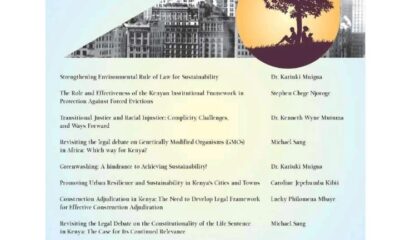

Review: Journal of Conflict Management and Sustainable Development, Volume 11, Issue 1
-


Definition and Regulation of Emergency Arbitration
-


Review: Journal of Appropriate Dispute Resolution (ADR) and Sustainability, Vol. 1, Issue 1 (2023)
-


Introducing Journal of Appropriate Dispute Resolution (ADR) and Sustainability
-


Dr. Kariuki Muigua’s 21 Years Journey to Top Arbitrator in Kenya 2023
News & Analysis
Way Forward in Applying Collaborative Approaches Towards Conflict Management
Published
4 weeks agoon
March 24, 2024By
Admin
By Hon. Prof. Kariuki Muigua, OGW, PhD, C.Arb, FCIArb is a Professor of Environmental Law and Dispute Resolution at the University of Nairobi, Member of Permanent Court of Arbitration, Leading Environmental Law Scholar, Respected Sustainable Development Policy Advisor, Top Natural Resources Lawyer, Highly-Regarded Dispute Resolution Expert and Awardee of the Order of Grand Warrior (OGW) of Kenya by H.E. the President of Republic of Kenya. He is the Academic Champion of ADR 2024, the African ADR Practitioner of the Year 2022, the African Arbitrator of the Year 2022, ADR Practitioner of the Year in Kenya 2021, CIArb (Kenya) Lifetime Achievement Award 2021 and ADR Publisher of the Year 2021 and Author of the Kenya’s First ESG Book: Embracing Environmental Social and Governance (ESG) tenets for Sustainable Development” (Glenwood, Nairobi, July 2023) and Kenya’s First Two Climate Change Law Book: Combating Climate Change for Sustainability (Glenwood, Nairobi, October 2023), Achieving Climate Justice for Development (Glenwood, Nairobi, October 2023), Promoting Rule of Law for Sustainable Development (Glenwood, Nairobi, January 2024) and Actualizing the Right to a Clean and Healthy Environment (Glenwood, Nairobi, March 2024)*
It is necessary to embrace and utilize collaborative approaches in managing conflicts. These techniques include mediation, negotiation, and facilitation. These mechanisms are effective in managing conflicts since they encourage parties to embrace and address disagreements through empathy and listening towards mutually beneficial solutions. Collaborative approaches also have the potential to preserve relationships, build trust, and promote long term positive change. They also ensure a win-win solution is found so that everyone is satisfied which creates the condition for peace and sustainability. These approaches are therefore ideal in managing conflicts. It is therefore important to embrace collaborative approaches in order to ensure effective management of conflicts.
In addition, it is necessary for third parties including mediators and facilitators to develop their skills and techniques in order to enhance the effectiveness of collaborative approaches towards conflict management. For example, it has correctly been observed that mediators and facilitators should listen actively and empathetically in order to assist parties to collaborate towards managing their dispute. Therefore, when a dispute arises, the first step should involve listening to all parties involved with an open mind and without judgment. This should entail active listening, which means paying attention to both verbal and nonverbal cues and acknowledging the emotions and perceptions involved.
It has been observed that by listening empathetically, a third party such as a mediator of facilitator can understand each person’s perspective and start to build a foundation for resolving the conflict through collaboration. In addition, while collaborating towards conflict management, it is necessary to encourage and help parties to focus on interests and not positions. It has been pointed out that focusing positions can result in a standstill which can delay or even defeat the conflict management process. However, by identifying and addressing the underlying interests parties can find common ground and collaborate towards coming up with creative solutions towards their conflict.
Mediators and facilitators should also assist parties to look for areas of agreement or shared goals. Identifying a common ground can build momentum and create a positive environment for resolving the conflict. Further, in order to ensure the effectiveness of collaborative approaches in conflict management, it is necessary to build strong collaboration. It has been asserted that strong collaboration can be achieved by establishing a shared purpose, cultivating trust among parties, encouraging active participation by all parties, and promoting effective communication.
Strong collaboration enables parties to develop trust between and among themselves and strengthen communication channels between the various parties. It also helps to generate inclusive solutions that arise from wider stakeholders’ views. Therefore while applying collaborative approaches, it is necessary for parties to foster strong collaboration by identifying common goals, building trust, ensuring that all stakeholders are involved, and communicating effectively in order to come up with win-win outcomes.
Finally, while embracing collaborative approaches in conflict management, it is necessary for parties to consider seeking help from third parties if need arises. For example, negotiation is always the first point of call whenever a conflict arises whereby parties attempt to manage their conflict without the involvement of third parties. It has been described as the most effective collaborative approach towards conflict management since it starts with an understanding by both parties that they must search for solutions that satisfy everyone.
It enables parties to a dispute to come together to openly discuss the issue causing tension, actively listen to each other, and come up with mutually satisfactory solutions. However, it has been correctly observed that negotiation may fail especially if the conflict is particularly complex or involves multiple parties due to challenges in collaborating. In such circumstances, where negotiation fails, parties should consider resorting to other collaborative approaches such as mediation and facilitation where they attempt to manage the conflict with the help of a third party. A mediator or facilitator can assist parties to collaborate and continue with the negotiations and ultimately break the deadlock.
*This is an extract from Kenya’s First Clean and Healthy Environment Book: Actualizing the Right to a Clean and Healthy Environment (Glenwood, Nairobi, January 2024) by Hon. Prof. Kariuki Muigua, OGW, PhD, Professor of Environmental Law and Dispute Resolution, Senior Advocate of Kenya, Chartered Arbitrator, Kenya’s ADR Practitioner of the Year 2021 (Nairobi Legal Awards), ADR Lifetime Achievement Award 2021 (CIArb Kenya), African Arbitrator of the Year 2022, Africa ADR Practitioner of the Year 2022, Member of National Environment Tribunal (NET) Emeritus (2017 to 2023) and Member of Permanent Court of Arbitration nominated by Republic of Kenya and Academic Champion of ADR 2024. Prof. Kariuki Muigua is a foremost Environmental Law and Natural Resources Lawyer and Scholar, Sustainable Development Advocate and Conflict Management Expert in Kenya. Prof. Kariuki Muigua teaches Environmental Law and Dispute resolution at the University of Nairobi School of Law, The Center for Advanced Studies in Environmental Law and Policy (CASELAP) and Wangari Maathai Institute for Peace and Environmental Studies. He has published numerous books and articles on Environmental Law, Environmental Justice Conflict Management, Alternative Dispute Resolution and Sustainable Development. Prof. Muigua is also a Chartered Arbitrator, an Accredited Mediator, the Managing Partner of Kariuki Muigua & Co. Advocates and Africa Trustee Emeritus of the Chartered Institute of Arbitrators 2019-2022. Prof. Muigua is a 2023 recipient of President of the Republic of Kenya Order of Grand Warrior (OGW) Award for his service to the Nation as a Distinguished Expert, Academic and Scholar in Dispute Resolution and recognized among the top 5 leading lawyers and dispute resolution experts in Band 1 in Kenya by the Chambers Global Guide 2024 and was listed in the Inaugural THE LAWYER AFRICA Litigation Hall of Fame 2023 as one of the Top 50 Most Distinguished Litigation Lawyers in Kenya and the Top Arbitrator in Kenya in 2023.
References
Bercovitch. J., ‘Conflict and Conflict Management in Organizations: A Framework for Analysis.’ Available at https://ocd.lcwu.edu.pk/cfiles/International%20Relations/EC/IR403/Conflict.ConflictManagementinOrga nizations.pdf (Accessed on 01/03/2024).
Bercovitch. J., ‘Mediation Success or Failure: A Search for the Elusive Criteria.’ Cardozo Journal of Conflict Resolution, Vol. 7, p 289.
Bloomfield. D., ‘Towards Complementarity in Conflict Management: Resolution and Settlement in Northern Ireland,’ Journal of Peace Research., Volume 32, Issue 2.
Burrell. B., ‘The Five Conflict Styles’ Available at https://web.mit.edu/collaboration/mainsite/ modules/module1/1.11.5.html (Accessed on 01/03/2024).
Demmers. J., ‘Theories of Violent Conflict: An Introduction’ (Routledge, New York, 2012).
Diana. M., ‘From Conflict to Collaboration’ Available at https://www.pmi.org/learning/library/conflict-collaboration-beyond-projectsuccess-1899 (Accessed on 01/03/2024).
Food and Agriculture Organization., ‘Collaborative Conflict Management for Enhanced National Forest Programmes (NFPs)’ Available at https://www.fao.org/3/i2604e/i2604e00.pdf (Accessed on 01/03/2024).
International Organization for Peace Building., ‘Natural Resources and Conflict: A Path to Mediation.’ Available at https://www.interpeace.org/2015/11/naturalresources-and-conflict-a-path-to-mediation/ (Accessed on 01/03/2024).
Isenhart. M.W., & Spangle. M., ‘Summary of “Collaborative Approaches to Resolving Conflict” ‘ Available at https://www.beyondintractability.org/bksum/isenhart-collaborative (Accessed on 01/03/2024).
Kaushal. R., & Kwantes. C., ‘The Role of Culture and Personality in Choice of Conflict Management Strategy.’ International Journal of Intercultural Relations 30 (2006) 579– 603.
Leeds. C.A., ‘Managing Conflicts across Cultures: Challenges to Practitioners.’ International Journal of Peace Studies, Volume 2, No. 2, 1997.
May. E., ‘Collaborating Conflict Style Explained In 4 Minutes’ Available at https://www.niagara institute.com/blog/collaborating-conflict-style/ (Accessed on 01/03/2024).
Miroslavov. M., ‘Mastering the Collaborating Conflict Style In 2024’ Available at https://www.officernd.com/blog/collaborating-conflictstyle/#:~:text=It’s%20one%20of%20the%20strat egies,their%20underlying%20needs %20and%20interests. (Accessed on 01/03/2024).
Muigua. K & Kariuki. F., ‘ADR, Access to Justice and Development in Kenya.’ Available at http://kmco.co.ke/wp-content/uploads/2018/08/ADR-access-tojustice-and-development-inKenyaRevised-version-of-20.10.14.pdf (Accessed on 01/03/2024).
Muigua. K., ‘Alternative Dispute Resolution and Access to Justice in Kenya.’ Glenwood Publishers Limited, 2015.
Muigua. K., ‘Reframing Conflict Management in the East African Community: Moving from Alternative to ‘Appropriate’ Dispute Resolution.’ Available at https://kmco.co.ke/wpcontent/uploads/2023/06/ Reframing-ConflictManagement-in-the-East-African-CommunityMoving-from-Alternative-toAppropriate-Dispute-Resolution (Accessed on 01/03/2024).
Muigua. K., ‘Resolving Conflicts through Mediation in Kenya.’ Glenwood Publishers Limited, 2nd Edition., 2017.
Quain. S., ‘The Advantages & Disadvantages of Collaborating Conflict Management’ Available at https://smallbusiness.chron.com/advantagesdisadvantages-collaborating-conflict-management-36052.html (Accessed on 01/03/2024).
Samuel. A., ‘Is the Collaborative Style of Conflict Management the Best Approach?’ Available at https://www.linkedin.com/pulse/collaborative-style-conflictmanagement-best-approach-samuel-ansah (Accessed on 01/03/2024).
United Nations., ‘Land and Conflict’ Available at https://www.un.org/en/landnatural-resources-conflict/pdfs/GN_ExeS_Land%20and%20Conflict.pdf (Accessed on 01/03/2024).
Weiss. J., & Hughes. J., ‘Want Collaboration?: Accept—and Actively Manage— Conflict’ Available at https://hbr.org/2005/03/want-collaboration-accept-andactively-manage-conflict (Accessed on 01/03/2024).
News & Analysis
Opportunities and Challenges of Collaborative Conflict Management
Published
4 weeks agoon
March 24, 2024By
Admin
By Hon. Prof. Kariuki Muigua, OGW, PhD, C.Arb, FCIArb is a Professor of Environmental Law and Dispute Resolution at the University of Nairobi, Member of Permanent Court of Arbitration, Leading Environmental Law Scholar, Respected Sustainable Development Policy Advisor, Top Natural Resources Lawyer, Highly-Regarded Dispute Resolution Expert and Awardee of the Order of Grand Warrior (OGW) of Kenya by H.E. the President of Republic of Kenya. He is the Academic Champion of ADR 2024, the African ADR Practitioner of the Year 2022, the African Arbitrator of the Year 2022, ADR Practitioner of the Year in Kenya 2021, CIArb (Kenya) Lifetime Achievement Award 2021 and ADR Publisher of the Year 2021 and Author of the Kenya’s First ESG Book: Embracing Environmental Social and Governance (ESG) tenets for Sustainable Development” (Glenwood, Nairobi, July 2023) and Kenya’s First Two Climate Change Law Book: Combating Climate Change for Sustainability (Glenwood, Nairobi, October 2023), Achieving Climate Justice for Development (Glenwood, Nairobi, October 2023), Promoting Rule of Law for Sustainable Development (Glenwood, Nairobi, January 2024) and Actualizing the Right to a Clean and Healthy Environment (Glenwood, Nairobi, March 2024)*
One of the key collaborative approaches that can be applied in conflict management is mediation. Mediation has been defined as a method of conflict management where conflicting parties gather to seek solutions to the conflict, with the assistance of a third party who facilitates discussions and the flow of information, and thus aiding in the process of reaching an agreement.
Mediation is usually a continuation of the negotiation process since it arises where parties to a conflict have attempted negotiations, but have reached a deadlock. Parties therefore involve a third party known as a mediator to assist them continue with the negotiations and ultimately break the deadlock. A mediator does not have the power to impose a solution upon the parties but rather facilitates communication, promotes understanding, focuses the parties on their interests, and uses creative problem solving to enable the parties to reach their own agreement.
Some of the core values and principles guiding mediation as a collaborative approach towards conflict management include impartiality, empathy, valued reputation, and confidentiality. It has also been pointed out that mediation has certain attributes which include informality, flexibility, efficiency, confidentiality, party autonomy and the ability to promote expeditious and cost effective management of dispute which makes it an ideal mechanism for managing disputes.
Mediation is an effective mechanism that can foster collaboration due to its potential to build peace and bring people together, binding them towards a common goal. Mediation can also foster effective management of conflicts by building consensus and collaboration. It has been argued that mediation can enhance collaboration towards conflict management due to its emphasis on the need for a mediator who listen to the wants, needs, fears, and concerns of all sides. Therefore, for mediation to be effective in fostering collaboration, the approach must be mild and non-confrontational because the goal is to make all parties feel comfortable expressing their views and opinions.
Another key collaborative approach towards conflict management is negotiation. It has been defined as an informal process that involves parties to a conflict meeting to identify and discuss the issues at hand so as to arrive at a mutually acceptable solution without the help of a third party. Negotiation is one of the most fundamental methods of managing conflicts which offers parties maximum control over the process66. It aims at harmonizing the interests of the parties concerned amicably. Negotiation has been described as the process that creates and fuels collaboration.
Negotiation fosters collaboration since it involves all parties sitting down together, talking through the conflict and working towards a solution together. Negotiation has been described as the most effective collaborative approach towards conflict management since it starts with an understanding by both parties that they must search for solutions that satisfy everyone. It enables parties to a dispute to come together to openly discuss the issue causing tension, actively listen to each other, and come up with mutually satisfactory solutions. If negotiation fails, parties may resort to other collaborative approaches such as mediation and facilitation where they attempt to manage the conflict with the help of a third party.
Facilitation is another key collaborative approach towards conflict management. Facilitation entails a third party known as a facilitator who helps parties to a conflict to understand their common objectives and achieve them without while remaining objective in the discussion. A facilitator assists conflicting parties in achieving consensus on any disagreements so that they have a strong basis for future action.
It has been pointed out that facilitation is effective in fostering collaboration in conflict management particularly in conflicts which are complex in nature or those that involve multiple parties. In such conflicts, it is necessary to seek outside help from a neutral third party to facilitate the discussion as parties work towards mutually acceptable outcomes.
Applying collaborative approaches towards conflict management offers several advantages. It has been pointed out that collaborating results in mutually acceptable solutions. Such solutions can therefore be effective and long lasting negating the likelihood of conflicts reemerging in future. Collaborating signifies joint efforts, gain for both parties and integrated solutions arrived at by consensual decisions.
Collaborating is also very effective when it is necessary to build or maintain relationships since it focuses on the needs and interests of all parties in a dispute. It has been observed that collaborative approaches emphasize trust-building, open communication, and empathizing with each other’s perspectives which goes beyond resolving conflicts to facilitate deeper understandings of each other. Collaborative approaches can therefore lead to better interpersonal connections.
Collaborating can also result in constructive decision-making since encouraging active engagement and open dialogue helps others think outside of the box and explore innovative paths towards conflict management. Further, by encouraging the participation and involvement of all stakeholders, collaboration ensures that everyone feels heard, valued and understood which is very essential in managing conflicts.
In addition, collaborating sets the tone for future conflict resolutions since it gives those involved the shared responsibility to resolve their problems. However, collaborative approaches towards conflict management have also been associated with several drawbacks. For example, it has been observed that collaborative approaches may not be easy to implement since they involve a lot of effort to get an actionable solution. It has been observed that thorough discussions, active participation, and exploring multiple perspectives as envisaged by collaborative approaches take time.
Collaborating may therefore require patience and dedication to ensure all voices are heard and meaningful resolutions are reached. Achieving consensus through collaborative approaches can also be difficult since conflicting opinions, varying conflict goals, and emotional variables can make the consensus-building process challenging and time-consuming. As a result of these challenges, it has been asserted that collaborative approaches towards conflict management are frequently the most difficult and time-consuming to achieve.
Further, it has been argued that over use of collaboration and consensual decision-making may reflect risk aversion tendencies or an inclination to defuse responsibility. Despite these challenges, collaborative approaches towards conflict management are ideal in ensuring win-win and long lasting outcomes. It is therefore necessary to embrace and apply collaborative approaches towards conflict management.
*This is an extract from Kenya’s First Clean and Healthy Environment Book: Actualizing the Right to a Clean and Healthy Environment (Glenwood, Nairobi, January 2024) by Hon. Prof. Kariuki Muigua, OGW, PhD, Professor of Environmental Law and Dispute Resolution, Senior Advocate of Kenya, Chartered Arbitrator, Kenya’s ADR Practitioner of the Year 2021 (Nairobi Legal Awards), ADR Lifetime Achievement Award 2021 (CIArb Kenya), African Arbitrator of the Year 2022, Africa ADR Practitioner of the Year 2022, Member of National Environment Tribunal (NET) Emeritus (2017 to 2023) and Member of Permanent Court of Arbitration nominated by Republic of Kenya and Academic Champion of ADR 2024. Prof. Kariuki Muigua is a foremost Environmental Law and Natural Resources Lawyer and Scholar, Sustainable Development Advocate and Conflict Management Expert in Kenya. Prof. Kariuki Muigua teaches Environmental Law and Dispute resolution at the University of Nairobi School of Law, The Center for Advanced Studies in Environmental Law and Policy (CASELAP) and Wangari Maathai Institute for Peace and Environmental Studies. He has published numerous books and articles on Environmental Law, Environmental Justice Conflict Management, Alternative Dispute Resolution and Sustainable Development. Prof. Muigua is also a Chartered Arbitrator, an Accredited Mediator, the Managing Partner of Kariuki Muigua & Co. Advocates and Africa Trustee Emeritus of the Chartered Institute of Arbitrators 2019-2022. Prof. Muigua is a 2023 recipient of President of the Republic of Kenya Order of Grand Warrior (OGW) Award for his service to the Nation as a Distinguished Expert, Academic and Scholar in Dispute Resolution and recognized among the top 5 leading lawyers and dispute resolution experts in Band 1 in Kenya by the Chambers Global Guide 2024 and was listed in the Inaugural THE LAWYER AFRICA Litigation Hall of Fame 2023 as one of the Top 50 Most Distinguished Litigation Lawyers in Kenya and the Top Arbitrator in Kenya in 2023.
References
Bercovitch. J., ‘Conflict and Conflict Management in Organizations: A Framework for Analysis.’ Available at https://ocd.lcwu.edu.pk/cfiles/International%20Relations/EC/IR403/Conflict.ConflictManagementinOrga nizations.pdf (Accessed on 01/03/2024).
Bercovitch. J., ‘Mediation Success or Failure: A Search for the Elusive Criteria.’ Cardozo Journal of Conflict Resolution, Vol. 7, p 289.
Bloomfield. D., ‘Towards Complementarity in Conflict Management: Resolution and Settlement in Northern Ireland,’ Journal of Peace Research., Volume 32, Issue 2.
Burrell. B., ‘The Five Conflict Styles’ Available at https://web.mit.edu/collaboration/mainsite/ modules/module1/1.11.5.html (Accessed on 01/03/2024).
Demmers. J., ‘Theories of Violent Conflict: An Introduction’ (Routledge, New York, 2012).
Diana. M., ‘From Conflict to Collaboration’ Available at https://www.pmi.org/learning/library/conflict-collaboration-beyond-projectsuccess-1899 (Accessed on 01/03/2024).
Food and Agriculture Organization., ‘Collaborative Conflict Management for Enhanced National Forest Programmes (NFPs)’ Available at https://www.fao.org/3/i2604e/i2604e00.pdf (Accessed on 01/03/2024).
International Organization for Peace Building., ‘Natural Resources and Conflict: A Path to Mediation.’ Available at https://www.interpeace.org/2015/11/naturalresources-and-conflict-a-path-to-mediation/ (Accessed on 01/03/2024).
Isenhart. M.W., & Spangle. M., ‘Summary of “Collaborative Approaches to Resolving Conflict” ‘ Available at https://www.beyondintractability.org/bksum/isenhart-collaborative (Accessed on 01/03/2024).
Kaushal. R., & Kwantes. C., ‘The Role of Culture and Personality in Choice of Conflict Management Strategy.’ International Journal of Intercultural Relations 30 (2006) 579– 603.
Leeds. C.A., ‘Managing Conflicts across Cultures: Challenges to Practitioners.’ International Journal of Peace Studies, Volume 2, No. 2, 1997.
May. E., ‘Collaborating Conflict Style Explained In 4 Minutes’ Available at https://www.niagara institute.com/blog/collaborating-conflict-style/ (Accessed on 01/03/2024).
Miroslavov. M., ‘Mastering the Collaborating Conflict Style In 2024’ Available at https://www.officernd.com/blog/collaborating-conflictstyle/#:~:text=It’s%20one%20of%20the%20strat egies,their%20underlying%20needs %20and%20interests. (Accessed on 01/03/2024).
Muigua. K & Kariuki. F., ‘ADR, Access to Justice and Development in Kenya.’ Available at http://kmco.co.ke/wp-content/uploads/2018/08/ADR-access-tojustice-and-development-inKenyaRevised-version-of-20.10.14.pdf (Accessed on 01/03/2024).
Muigua. K., ‘Alternative Dispute Resolution and Access to Justice in Kenya.’ Glenwood Publishers Limited, 2015.
Muigua. K., ‘Reframing Conflict Management in the East African Community: Moving from Alternative to ‘Appropriate’ Dispute Resolution.’ Available at https://kmco.co.ke/wpcontent/uploads/2023/06/ Reframing-ConflictManagement-in-the-East-African-CommunityMoving-from-Alternative-toAppropriate-Dispute-Resolution (Accessed on 01/03/2024).
Muigua. K., ‘Resolving Conflicts through Mediation in Kenya.’ Glenwood Publishers Limited, 2nd Edition., 2017.
Quain. S., ‘The Advantages & Disadvantages of Collaborating Conflict Management’ Available at https://smallbusiness.chron.com/advantagesdisadvantages-collaborating-conflict-management-36052.html (Accessed on 01/03/2024).
Samuel. A., ‘Is the Collaborative Style of Conflict Management the Best Approach?’ Available at https://www.linkedin.com/pulse/collaborative-style-conflictmanagement-best-approach-samuel-ansah (Accessed on 01/03/2024).
United Nations., ‘Land and Conflict’ Available at https://www.un.org/en/landnatural-resources-conflict/pdfs/GN_ExeS_Land%20and%20Conflict.pdf (Accessed on 01/03/2024).
Weiss. J., & Hughes. J., ‘Want Collaboration?: Accept—and Actively Manage— Conflict’ Available at https://hbr.org/2005/03/want-collaboration-accept-andactively-manage-conflict (Accessed on 01/03/2024).
News & Analysis
Collaborative Approaches towards Conflict Management
Published
4 weeks agoon
March 23, 2024By
Admin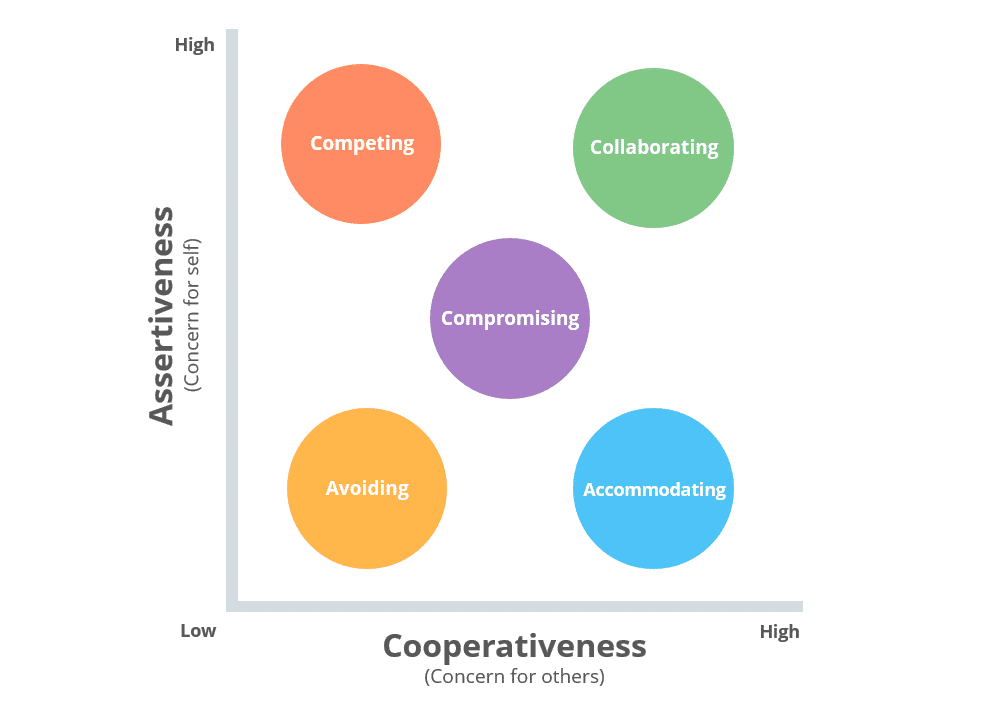
By Hon. Prof. Kariuki Muigua, OGW, PhD, C.Arb, FCIArb is a Professor of Environmental Law and Dispute Resolution at the University of Nairobi, Member of Permanent Court of Arbitration, Leading Environmental Law Scholar, Respected Sustainable Development Policy Advisor, Top Natural Resources Lawyer, Highly-Regarded Dispute Resolution Expert and Awardee of the Order of Grand Warrior (OGW) of Kenya by H.E. the President of Republic of Kenya. He is the Academic Champion of ADR 2024, the African ADR Practitioner of the Year 2022, the African Arbitrator of the Year 2022, ADR Practitioner of the Year in Kenya 2021, CIArb (Kenya) Lifetime Achievement Award 2021 and ADR Publisher of the Year 2021 and Author of the Kenya’s First ESG Book: Embracing Environmental Social and Governance (ESG) tenets for Sustainable Development” (Glenwood, Nairobi, July 2023) and Kenya’s First Two Climate Change Law Book: Combating Climate Change for Sustainability (Glenwood, Nairobi, October 2023), Achieving Climate Justice for Development (Glenwood, Nairobi, October 2023), Promoting Rule of Law for Sustainable Development (Glenwood, Nairobi, January 2024) and Actualizing the Right to a Clean and Healthy Environment (Glenwood, Nairobi, March 2024)*
Conflict management can involve different approaches. These techniques include collaborating, competing, avoiding, accommodating, and compromising. Collaborative approaches towards conflict management have been hailed as the most ideal due to their potential to produce satisfactory and long-term results. Collaborative approaches have been hailed as ensuring efficient and effective management of conflicts towards peace and sustainability.
Collaborative conflict management refers to the use of a wide range of informal approaches where competing or opposing stakeholder groups work together to reach an agreement on a controversial issue. In addition, it has been pointed out that collaborative conflict resolution encourages teams to work through disagreements through empathy, listening, and mutually beneficial solutions. Collaboration, unlike compromise, does not focus on both sides making sacrifices. Instead, in collaborative approaches, both parties come up with mutually beneficial solutions. Collaborating has been identified as a powerful approach to conflict resolution built on cooperation, open communication, and finding win-win outcomes.
It has been argued that among all conflict management techniques, collaborative approaches are the most likely to identify the root cause of a conflict, pinpoint the underlying needs of the parties involved, and come to a win-win outcome for everyone. Through collaboration, all parties to a conflict come together to openly discuss the issue causing tension, actively listen to each other, and work towards a solution that is mutually satisfactory and acceptable to everyone.
It has been pointed out that collaborative conflict management aims to achieve several objectives which include: promoting the participation of diverse or competing stakeholder groups in order to reach agreement on a controversial issue; assisting stakeholders in adopting an attitude that is oriented towards cooperation rather than pursuit of individual interests; establishing new forms of communication and decision making on important issues, and raising awareness of the importance of equity and accountability in stakeholder communication; developing partnerships and strengthening stakeholder networks; creating space for stakeholders to communicate in order to bring about future agreements so that concrete action can be taken; and producing decisions that have a strong base of support.
In addition, it has been observed that collaborative approaches towards conflict management aim to preserve relationships, build trust, and promote long term positive change. Collaborative conflict management is based on certain principles key among them being ensuring open communication, finding common ground, and creating a culture of trust. Collaborative approaches towards conflict management has been hailed as the “win-win” strategy to conflict management. It is an effective means of restoring peace.
Further, it has been argued that collaborative approaches are a better way to conflict management since they encourage freedom of expression, where the conflicting parties express their thoughts and concerns verbally, which makes all parties involved in the dispute feel valued and be aware of each other’s concern. In addition, it has been argued that collaborating sets the tone for future conflict resolution and gives those involved the shared responsibility to manage conflicts prior to escalation.
Managing conflicts in a collaborative way helps to develop trust and strengthen communication channels between the various parties. For example, it has been pointed out that in conflicts related to natural resources, collaborative approaches help in generating inclusive solutions that arise from wider stakeholders’ views, and therefore helps clarify policies, institutions and processes that regulate access to – or control over – natural resources. It has been observed that collaborating entails all parties to a conflict sitting down together, discussing the conflict, and working towards a solution together.
Collaborative approaches towards conflict management have been identified as vital when it is necessary to maintain all parties’ relationships or when the solution itself will have a significant impact on large group of people. In such situations, collaborating ensures a win-win solution is found so that everyone is satisfied which creates the condition for peace and sustainability.
It has been pointed out that for collaborative approaches to be effective, it is necessary for all parties to have collaborating skills such as the ability to use active or effective listening, confront situations in a nonthreatening way, analyze input, and identify underlying concerns. Collaborative approaches towards conflict management are important in fostering effective and long-lasting outcomes. It is therefore necessary to apply collaborative approaches in order to ensure effective and efficient management of conflicts.
*This is an extract from Kenya’s First Clean and Healthy Environment Book: Actualizing the Right to a Clean and Healthy Environment (Glenwood, Nairobi, January 2024) by Hon. Prof. Kariuki Muigua, OGW, PhD, Professor of Environmental Law and Dispute Resolution, Senior Advocate of Kenya, Chartered Arbitrator, Kenya’s ADR Practitioner of the Year 2021 (Nairobi Legal Awards), ADR Lifetime Achievement Award 2021 (CIArb Kenya), African Arbitrator of the Year 2022, Africa ADR Practitioner of the Year 2022, Member of National Environment Tribunal (NET) Emeritus (2017 to 2023) and Member of Permanent Court of Arbitration nominated by Republic of Kenya and Academic Champion of ADR 2024. Prof. Kariuki Muigua is a foremost Environmental Law and Natural Resources Lawyer and Scholar, Sustainable Development Advocate and Conflict Management Expert in Kenya. Prof. Kariuki Muigua teaches Environmental Law and Dispute resolution at the University of Nairobi School of Law, The Center for Advanced Studies in Environmental Law and Policy (CASELAP) and Wangari Maathai Institute for Peace and Environmental Studies. He has published numerous books and articles on Environmental Law, Environmental Justice Conflict Management, Alternative Dispute Resolution and Sustainable Development. Prof. Muigua is also a Chartered Arbitrator, an Accredited Mediator, the Managing Partner of Kariuki Muigua & Co. Advocates and Africa Trustee Emeritus of the Chartered Institute of Arbitrators 2019-2022. Prof. Muigua is a 2023 recipient of President of the Republic of Kenya Order of Grand Warrior (OGW) Award for his service to the Nation as a Distinguished Expert, Academic and Scholar in Dispute Resolution and recognized among the top 5 leading lawyers and dispute resolution experts in Band 1 in Kenya by the Chambers Global Guide 2024 and was listed in the Inaugural THE LAWYER AFRICA Litigation Hall of Fame 2023 as one of the Top 50 Most Distinguished Litigation Lawyers in Kenya and the Top Arbitrator in Kenya in 2023.
References
Bercovitch. J., ‘Conflict and Conflict Management in Organizations: A Framework for Analysis.’ Available at https://ocd.lcwu.edu.pk/cfiles/International%20Relations/EC/IR403/Conflict.ConflictManagementinOrga nizations.pdf (Accessed on 01/03/2024).
Bercovitch. J., ‘Mediation Success or Failure: A Search for the Elusive Criteria.’ Cardozo Journal of Conflict Resolution, Vol. 7, p 289.
Bloomfield. D., ‘Towards Complementarity in Conflict Management: Resolution and Settlement in Northern Ireland,’ Journal of Peace Research., Volume 32, Issue 2.
Burrell. B., ‘The Five Conflict Styles’ Available at https://web.mit.edu/collaboration/mainsite/ modules/module1/1.11.5.html (Accessed on 01/03/2024).
Demmers. J., ‘Theories of Violent Conflict: An Introduction’ (Routledge, New York, 2012).
Diana. M., ‘From Conflict to Collaboration’ Available at https://www.pmi.org/learning/library/conflict-collaboration-beyond-projectsuccess-1899 (Accessed on 01/03/2024).
Food and Agriculture Organization., ‘Collaborative Conflict Management for Enhanced National Forest Programmes (NFPs)’ Available at https://www.fao.org/3/i2604e/i2604e00.pdf (Accessed on 01/03/2024).
International Organization for Peace Building., ‘Natural Resources and Conflict: A Path to Mediation.’ Available at https://www.interpeace.org/2015/11/naturalresources-and-conflict-a-path-to-mediation/ (Accessed on 01/03/2024).
Isenhart. M.W., & Spangle. M., ‘Summary of “Collaborative Approaches to Resolving Conflict” ‘ Available at https://www.beyondintractability.org/bksum/isenhart-collaborative (Accessed on 01/03/2024).
Kaushal. R., & Kwantes. C., ‘The Role of Culture and Personality in Choice of Conflict Management Strategy.’ International Journal of Intercultural Relations 30 (2006) 579– 603.
Leeds. C.A., ‘Managing Conflicts across Cultures: Challenges to Practitioners.’ International Journal of Peace Studies, Volume 2, No. 2, 1997.
May. E., ‘Collaborating Conflict Style Explained In 4 Minutes’ Available at https://www.niagara institute.com/blog/collaborating-conflict-style/ (Accessed on 01/03/2024).
Miroslavov. M., ‘Mastering the Collaborating Conflict Style In 2024’ Available at https://www.officernd.com/blog/collaborating-conflictstyle/#:~:text=It’s%20one%20of%20the%20strat egies,their%20underlying%20needs %20and%20interests. (Accessed on 01/03/2024).
Muigua. K & Kariuki. F., ‘ADR, Access to Justice and Development in Kenya.’ Available at http://kmco.co.ke/wp-content/uploads/2018/08/ADR-access-tojustice-and-development-inKenyaRevised-version-of-20.10.14.pdf (Accessed on 01/03/2024).
Muigua. K., ‘Alternative Dispute Resolution and Access to Justice in Kenya.’ Glenwood Publishers Limited, 2015.
Muigua. K., ‘Reframing Conflict Management in the East African Community: Moving from Alternative to ‘Appropriate’ Dispute Resolution.’ Available at https://kmco.co.ke/wpcontent/uploads/2023/06/ Reframing-ConflictManagement-in-the-East-African-CommunityMoving-from-Alternative-toAppropriate-Dispute-Resolution (Accessed on 01/03/2024).
Muigua. K., ‘Resolving Conflicts through Mediation in Kenya.’ Glenwood Publishers Limited, 2nd Edition., 2017.
Quain. S., ‘The Advantages & Disadvantages of Collaborating Conflict Management’ Available at https://smallbusiness.chron.com/advantagesdisadvantages-collaborating-conflict-management-36052.html (Accessed on 01/03/2024).
Samuel. A., ‘Is the Collaborative Style of Conflict Management the Best Approach?’ Available at https://www.linkedin.com/pulse/collaborative-style-conflictmanagement-best-approach-samuel-ansah (Accessed on 01/03/2024).
United Nations., ‘Land and Conflict’ Available at https://www.un.org/en/landnatural-resources-conflict/pdfs/GN_ExeS_Land%20and%20Conflict.pdf (Accessed on 01/03/2024).
Weiss. J., & Hughes. J., ‘Want Collaboration?: Accept—and Actively Manage— Conflict’ Available at https://hbr.org/2005/03/want-collaboration-accept-andactively-manage-conflict (Accessed on 01/03/2024).

Irene Kiwool: My Track Record and Call to PACT for Better Nairobi LSK

A Toolkit for Customers on accessing Financial Services in Kenya

Way Forward in Applying Collaborative Approaches Towards Conflict Management

Opportunities and Challenges of Collaborative Conflict Management

Collaborative Approaches towards Conflict Management

Way Forward in Fostering the Blue Economy for Sustainability
Trending
-

 Lawyers10 months ago
Lawyers10 months agoTHE LAWYER AFRICA Litigation Hall of Fame | Kenya in 2023
-
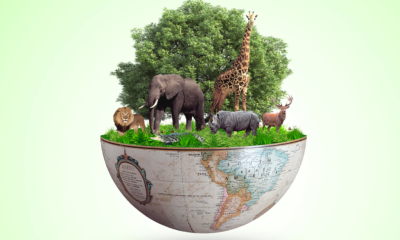
 News & Analysis2 years ago
News & Analysis2 years agoThe Definition and Scope of Biodiversity
-
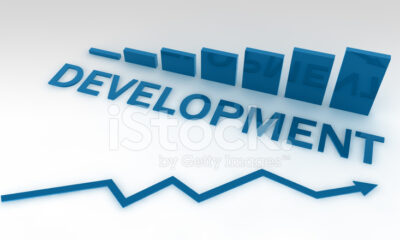
 News & Analysis2 years ago
News & Analysis2 years agoThe Definition, Aspects and Theories of Development
-
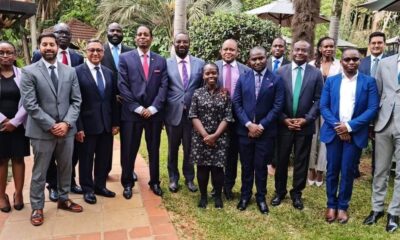
 News & Analysis2 years ago
News & Analysis2 years agoTHE TOP 200 ARBITRATORS IN KENYA 2022
-

 News & Analysis6 months ago
News & Analysis6 months agoThe Role of NEMA in Pollution Control in Kenya
-

 News & Analysis2 years ago
News & Analysis2 years agoRole of Science and Technology in Environmental Management in Kenya
-
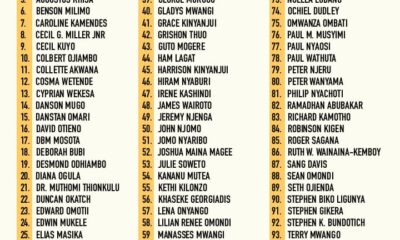
 Lawyers10 months ago
Lawyers10 months agoTHE LAWYER AFRICA Top 100 Litigation Lawyers in Kenya 2023
-
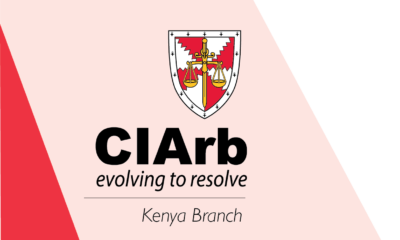
 News & Analysis7 months ago
News & Analysis7 months agoHow to Become an Arbitrator in Kenya

